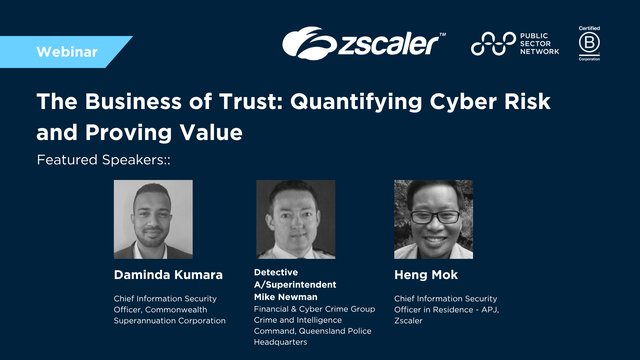

As public sector organizations look for ways to innovate and improve efficiency, the integration of speech and document automation (S&DA) addresses a critical need for backlog reduction that has been overlooked – until now.
The world is automating and the public sector faces a pivotal choice: remain bottlenecked by manual processes or adopt more efficient, streamlined workflows.
This article explores how S&DA can transform various government operations, including first responders, hospitals, courts/tribunals, and events/meetings, by reducing administrative burdens, enhancing accuracy, and supporting (not replacing) the dedicated public sector workforce.
1. First Responders
S&DA can streamline the workflow of first responders by enabling real-time transcription of emergency calls and field reports. With this technology, paramedics, firefighters, and police officers can dictate incident details directly into a mobile device, which then transcribes the information into a structured report. This allows for immediate, accurate documentation without the need to manually type out notes later and potentially forget or incorrectly remember details. This reduces administrative burden and ensures that crucial information is captured without delay.
Example Workflow:
Step 1: A police officer captures the details of an arrest through their vest camera.
Step 2: S&DA technology transcribes the audio in real-time (or post-arrest) and autoformats the transcript into a police report.
Step 3: The first-draft report is reviewed by an administrative worker and submitted into the central system.
2. Hospitals
In healthcare, clinical dictations and patient interviews are integral to maintaining accurate patient records. S&DA allows healthcare professionals to dictate notes during or after patient interactions, which are then automatically transcribed and added to the patient’s electronic health record. This reduces hours spent on documentation to minutes, minimizes errors, and allows doctors and nurses to focus more on patient care rather than writing notes.
Example Workflow:
Step 1: A doctor dictates a medical report for a workplace injury.
Step 2: A S&DA tool transcribes and extracts data from the dictation, then creates an independent medical examination (IME) report.
Step 3: The transcript and IME report are reviewed and submitted.
3. Courts/Tribunals
S&DA technology can significantly streamline the efficiency of court proceedings by providing real-time transcriptions of court hearings, witness testimonies, and other legal proceedings. This automation reduces the need for manual note-taking and ensures that all spoken content is captured precisely and immediately available for review.
Example Workflow:
Step 1: A 6-hour trial is recorded and sent to a transcription team with an urgent deadline.
Step 2: An S&DA tool transcribes the audio file with over 95% accuracy and exported in a custom first-draft transcript template.
Step 3: A transcriptionist reviews and edits the transcript, then submits it to the court within the same day.
4. Government Events
For legislative and municipal meetings, S&DA provides closed captioning services and instant transcripts of discussions, debates, and decisions. This technology can also translate them for more accessibility. This not only helps in maintaining accurate records but also facilitates greater transparency by making transcripts available to the public soon after the meetings.
Example Workflow:
Step 1: A town hall livestream is broadcasted with closed captions that are auto-edited in real-time by a S&DA tool.
Step 2: Post-event, the S&DA tool provides full, autoformatted transcript and subtitle files.
Step 3: The transcript is reviewed and published for public access.
Bettering The Public Sector Without Replacing Jobs
While speech and document automation technology can significantly streamline workflows, it's important to emphasize that these tools are designed to support, not replace, government workers. By reducing the time spent on administrative tasks, this tech allows employees to catch up on backlog across all sectors, focus on higher-value work, and experience greater overall productivity and job satisfaction.
The Bottom Line
Embracing these innovations not only addresses the pressing issue of administrative backlog but also sets the stage for a more agile and responsive public sector. As the demands on government services continue to evolve, integrating S&DA tools will be instrumental in maintaining efficiency, accuracy, and transparency.
Moreover, the successful implementation of these technologies can serve as a blueprint for future digital transformations within the public sector. By adopting S&DA tech, government agencies will become well-equipped to meet the challenges of modern governance, provide better services to the public, support their workforce, and reaffirm their commitment to serving the community effectively in an ever-changing digital landscape – all in one fell swoop.
Published by
About our partner

Loom Analytics
Loom Analytics is a leading business automation company that develops enterprise-grade AI technologies. With a focus on security, efficiency, and accuracy, we aim to redefine the way governments leverage AI to serve the public.Since its inception in 2015, Loom Analytics has been at the forefront of providing workflow solutions to solve administrative challenges, including speech-to-text, document automation, and document extraction, for the legal, medical, insurance, and business industries. We are proud to include partnerships with over 40 large transcription companies and thousands of freelance transcriptionists in these sectors across Canada, the US, the UK, and Australia.Our long-term journey with clients has granted us a unique lens into the challenges inherent to transcription operations. To meet these demands, we developed Claudio, our SaaS designed to ease businesses into the realm of transcript automation technology by seamlessly integrating with existing teams and workflows.We’re deeply committed to providing the resources and support required for companies to transition their teams. The augmentation of operating capacity and efficiency is central to our ethos, and we execute this by training the operations team to adopt the technology effectively and continue working with them as partners.
Learn more






























